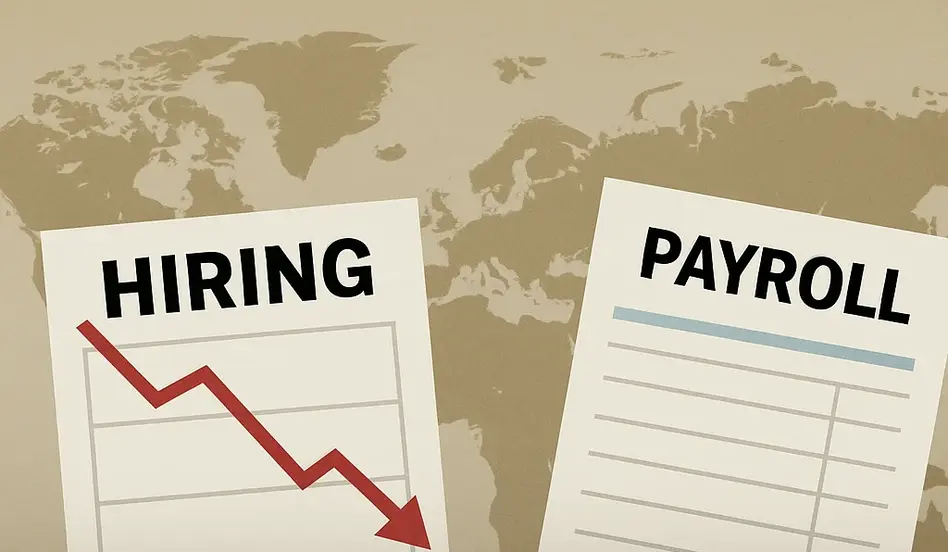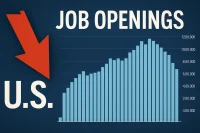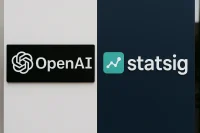The U.S. job market, once the anchor of post-pandemic recovery, is showing unmistakable signs of strain. The latest ADP National Employment Report revealed that private-sector employers added just 54,000 jobs in August, far below expectations of 150,000. Coupled with rising jobless claims and sluggish hiring momentum, the data strengthens the case for a Federal Reserve interest rate cut as early as mid-September.
The latest ADP National Employment Report highlights significant changes in hiring patterns that businesses must adapt to.
Additionally, the ADP National Employment Report has become a crucial indicator for understanding the health of the job market.
For workers and businesses alike, this slowdown raises critical questions: is the U.S. economy heading into a mild cooling period, or is it on the brink of something more serious?
The Numbers at a Glance
- Private-Sector Job Growth: +54,000 in August (weakest since early 2021 outside pandemic shocks).
- Jobless Claims: Rose to 237,000, reflecting more layoffs and difficulty in re-hiring.
- Layoffs: Particularly concentrated in retail, construction, and logistics.
- Wages: Growth has cooled to 4.1% annually, down from 6.7% at the 2022 peak.
These indicators suggest the labor market is not collapsing, but it is losing the momentum that fueled economic resilience over the past three years.
Why the Fed Is Watching Closely
The Federal Reserve has a dual mandate: keep inflation under control while maximizing employment.
The findings of the ADP National Employment Report are pivotal for economic strategists and policymakers.
Understanding the trends reported in the ADP National Employment Report is essential for anticipating future economic movements.
- Inflation, though still sticky in some sectors, has largely cooled to near the Fed’s 2% target.
- Employment is no longer roaring ahead; the ADP report shows demand for labor is waning.
With markets now pricing in a 98% chance of a rate cut at the September 17 meeting, analysts argue the Fed has the green light to prioritize growth and jobs.
Sectoral Weaknesses
- Retail: Hiring slowed sharply as consumer spending weakened. Rising prices are forcing households to cut discretionary purchases.
- Construction: Tariffs on imported materials and high financing costs have stalled projects.
- Logistics & Warehousing: A glut of inventory, coupled with slower e-commerce demand, has reduced the need for additional staff.
- Bright Spots: Healthcare and green energy continue to hire steadily, though not enough to offset losses elsewhere.
Analysts will closely monitor the next ADP National Employment Report for signs of recovery or further decline.
Data from the ADP National Employment Report is often used to forecast trends in job growth across various sectors.
Job Market Shifts, But Opportunities Remain
Retail, construction, and logistics may be slowing — but healthcare and green energy continue to hire steadily. Don’t wait for the market to catch up — find your next move today.
Search Jobs Now →Business Sentiment
Employers are cautious:
- Hiring Freezes: Many firms are holding back on new hires until they see clearer signals on Fed policy.
- AI and Automation: Companies are leaning more on technology to cut costs rather than expand headcount.
- Global Pressures: Weak growth in Europe and China is cooling demand for U.S. exports, further weighing on manufacturing jobs.
One HR executive summed it up: “We’re not laying people off aggressively, but we’re also not expanding. It’s a holding pattern.”
Implications for Workers
The implications of the latest ADP National Employment Report are significant for businesses planning their hiring strategies.
- Fewer Job Openings: Total U.S. vacancies now stand at 7.18 million, down from 12.1 million in March 2022.
- Lower Bargaining Power: The era of the “Great Resignation” is firmly over. Employers hold more leverage now.
- Slower Wage Growth: Paychecks are rising more slowly, squeezing household budgets amid lingering price pressures.
- Caution Among Job-Seekers: More workers are staying put, reflecting the “Big Hold” phenomenon reported earlier this summer.
Employers Hold the Advantage
With fewer openings and slower wage growth, top talent is staying put. Now is the perfect time to attract motivated candidates who are ready to make their next move.
Post a Job Now →Market Reactions
- Bonds: Yields dropped as investors bet on Fed cuts.
- Stocks: Markets rallied, viewing rate cuts as supportive for equities.
- Dollar: Weakened slightly against other currencies on expectations of looser monetary policy.
For Wall Street, bad news on jobs is paradoxically good news for markets—at least in the short term.
FAQs
Q1: Why is the ADP report important?
Because it provides an early snapshot of private-sector hiring trends, often foreshadowing the official Labor Department data.
Q2: Does weak hiring mean a recession is coming?
Not necessarily. It may signal a soft landing, where growth slows without tipping into full recession. But risks are rising.
Q3: How soon could the Fed cut rates?
Markets expect a cut at the September 17 meeting, with the possibility of more cuts later in 2025 if hiring remains weak.
Q4: Which sectors are still hiring?
Healthcare, education, and green energy continue to expand, even as retail, construction, and logistics slow.
Case Study: Retailers Freeze Expansion Plans
Consider Walmart, one of America’s largest private employers. In 2021–22, Walmart ramped up hiring to meet pandemic-driven demand. But in 2025, executives are striking a cautious tone.
- The company has slowed new store openings.
- Hiring for seasonal roles is being scaled back compared to pre-pandemic averages.
- Managers are under instructions to “do more with current staff” rather than adding new headcount.
This mirrors trends across retail: cautious expansion, fewer new hires, and a reliance on existing employees and automation. Walmart’s decision is emblematic of the “wait and see” posture now spreading across the private sector.
Investors and employers alike are keenly interested in the outcomes of the




